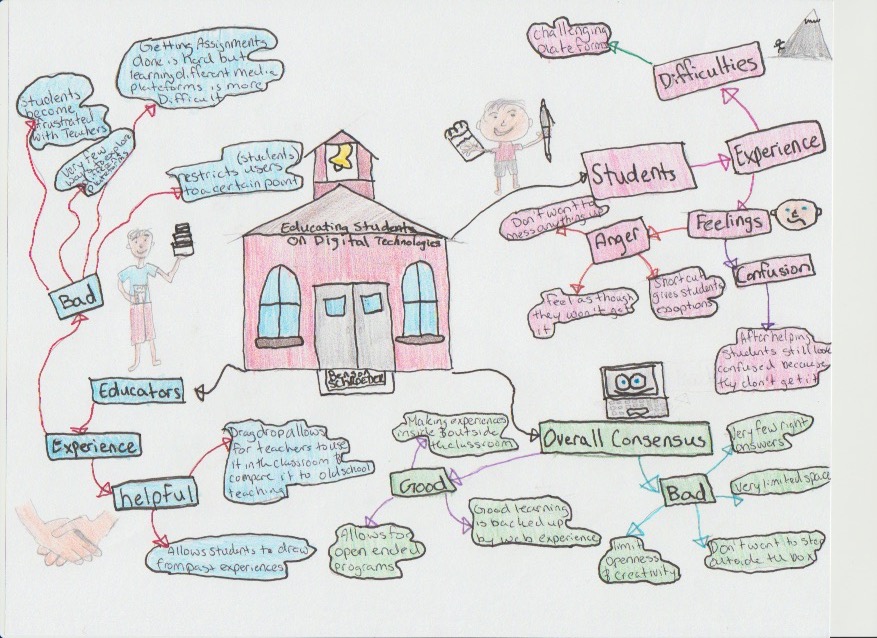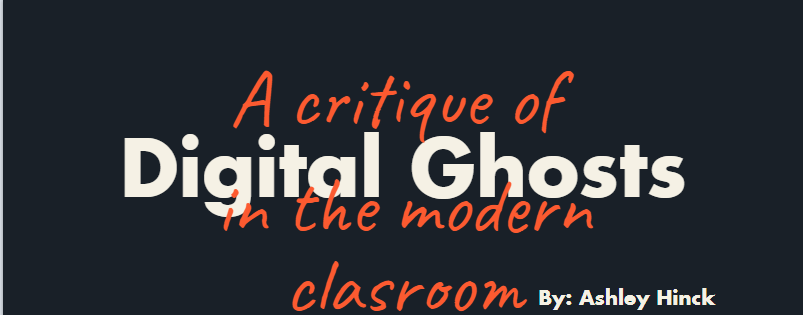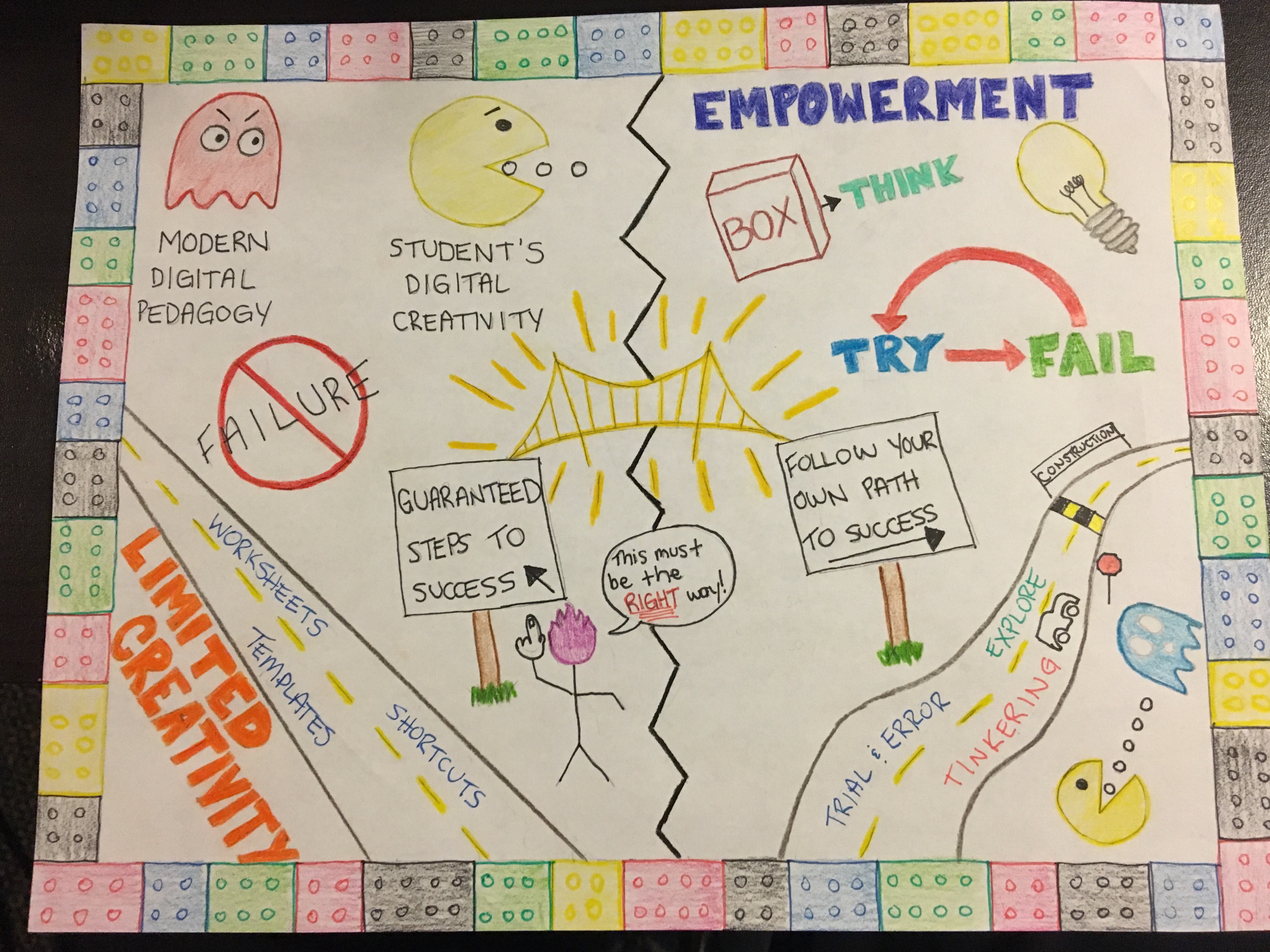Since the article, ‘Digital Ghosts in the Modern Classroom’ by Ashley Hinck discusses stepping away from using short cuts/templates in the classroom and with digital media, I decided to do that as well. I found it ironic that the websites we were encouraged to use for this assignment are prime examples of a template format. Therefore, I decided to make a mind map using sticky notes. The variety of colours and shapes definitely allows the text to stand out, and the pictures are both hand drawn and printed from the internet. I decided to go with a Pacman theme because I believe it’s a creative spin that plays off the idea of ‘digital ghosts’. I really enjoyed this article because it encouraged teachers and students to take creative risks and develop their problem solving skills. I think it’s important for students to learn that failing is fine, as long as you keep trying and never give up. While using guidelines can be useful at the beginning to learn the basics, students should slowly be eased into more independent assignments. Students will have a much more difficult experience if they are forced to immediately avoid using templates. It could even discourage them from being creative in the future.
I think one of the most challenging aspects of this project was being able to keep everything organized and still being creative. I had to create an attention-grabbing item that, at the same time, didn’t overload the senses. Ironically, summarizing the article was the easiest part of this assignment because of the amount of time literally brainstorming how my brainstorm would look. I think using sticky notes turned out to be a great idea for this project because it forced me to shy away from the norm of just writing ideas down on a mind map. With sticky notes, I had to focus on shape and colour coordination and ask: how much text can I fit on one? Do I have enough space to fit all of my ideas on this board? How will these sticky notes affect how many pictures I use? At the end of the day there is one thing I know for certain: I’m definitely keeping my distance from sticky notes for a while.

Just in case you can’t read everything:
1) 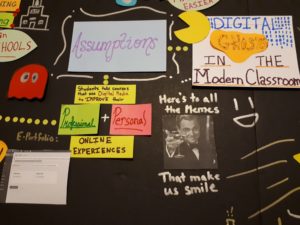
2) 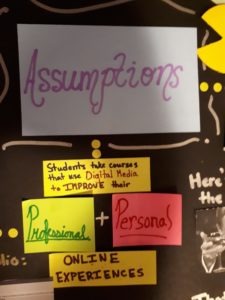
3) 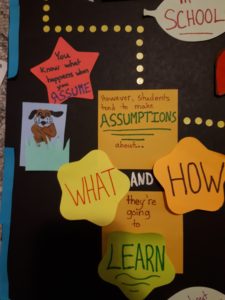
4)
5) 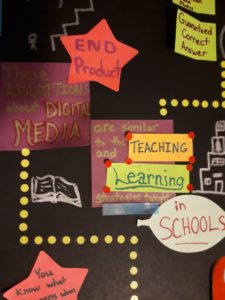
6) 
7) 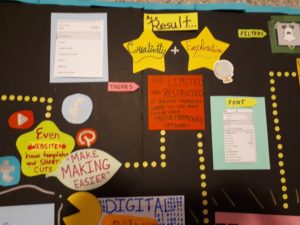
8) 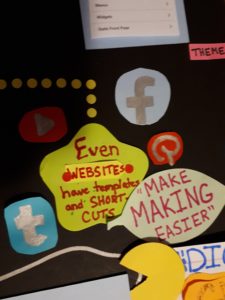
9) 
10) 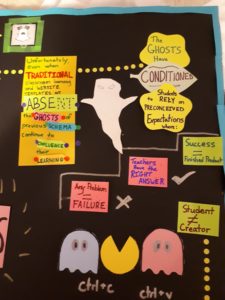
11) 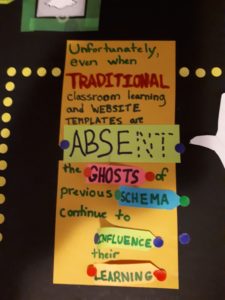
12) 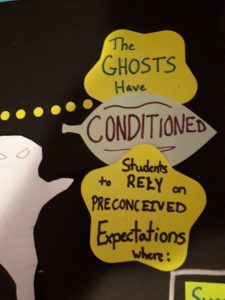
13) 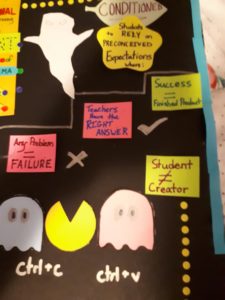
14) 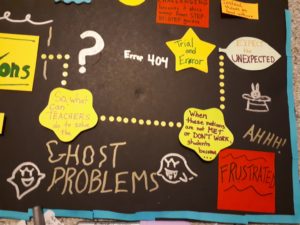
15) 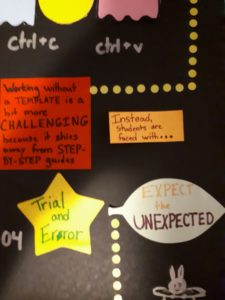
16)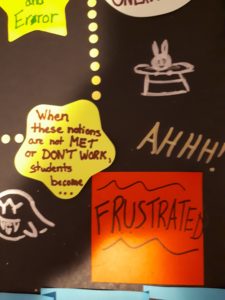
17) 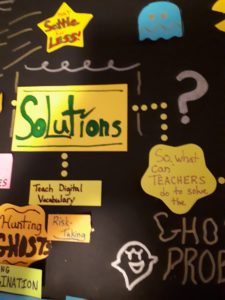
18) 
19) 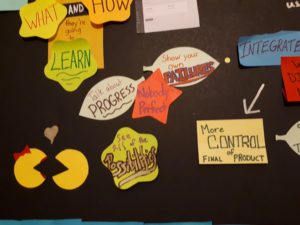
Full view again (magnified):

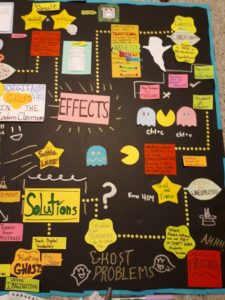

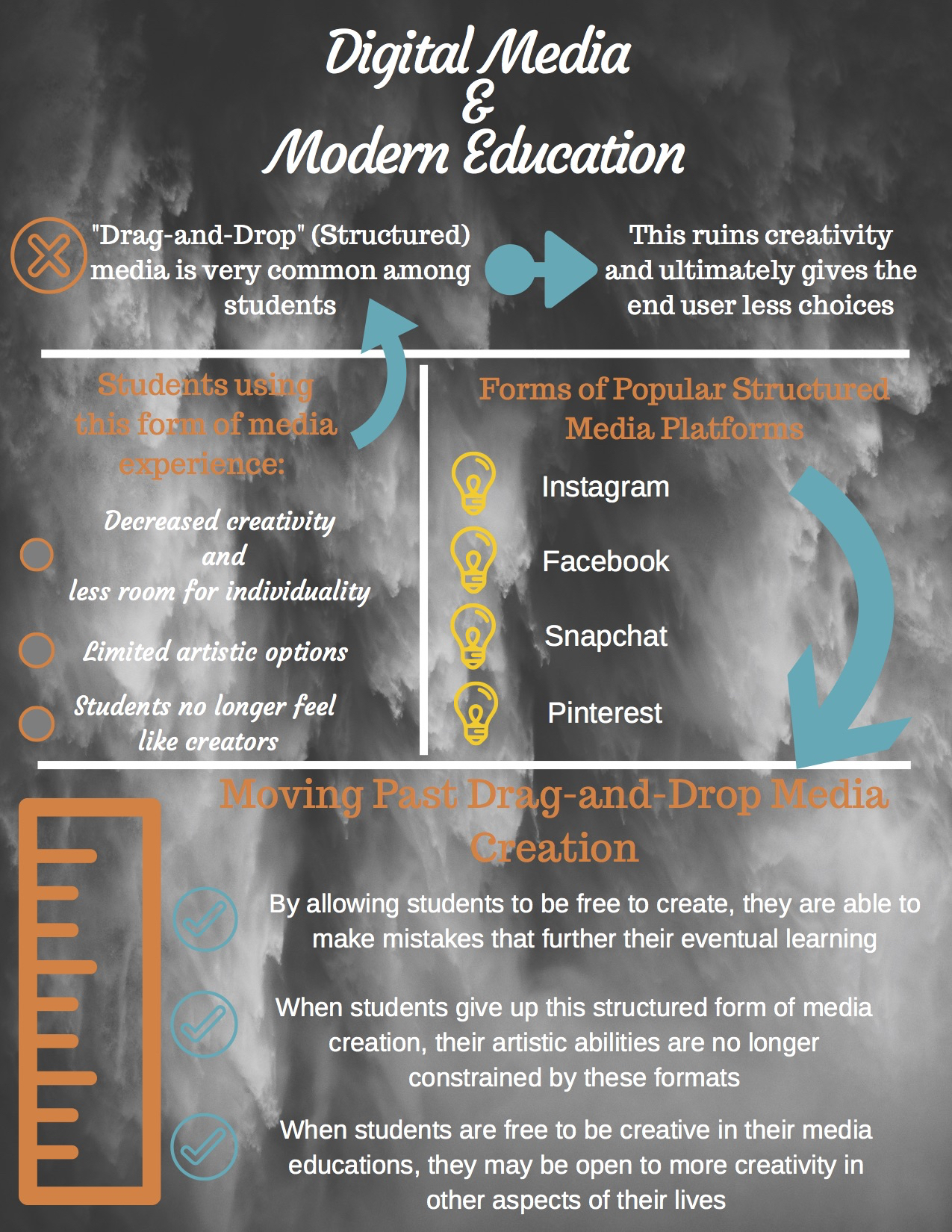
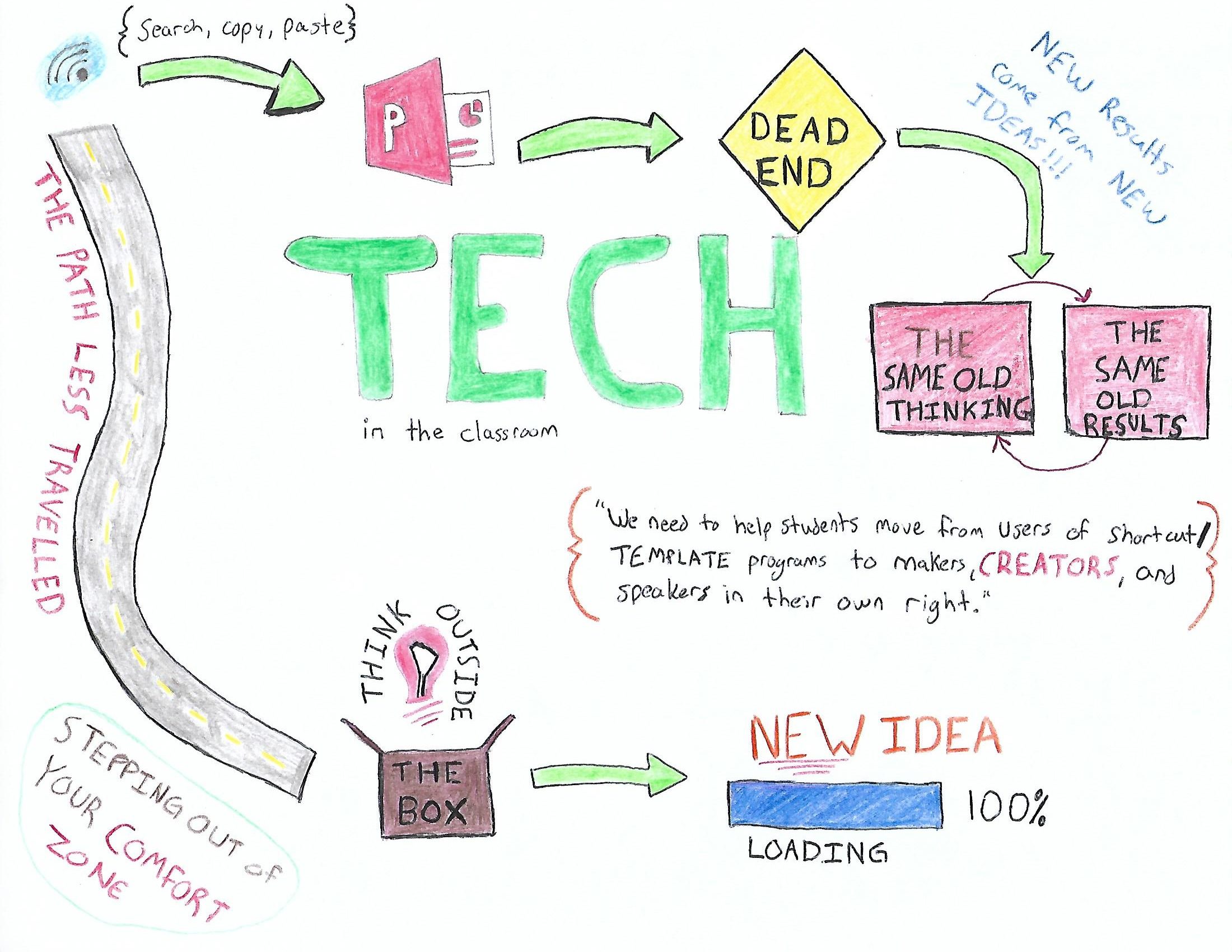
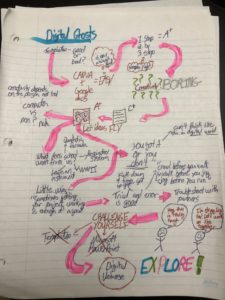
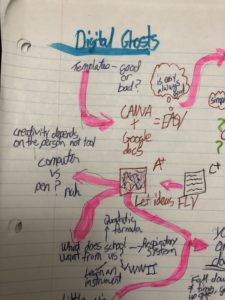
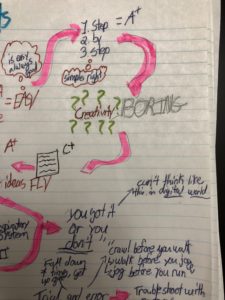
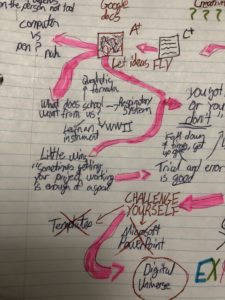
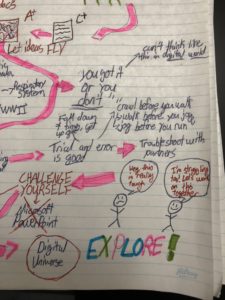

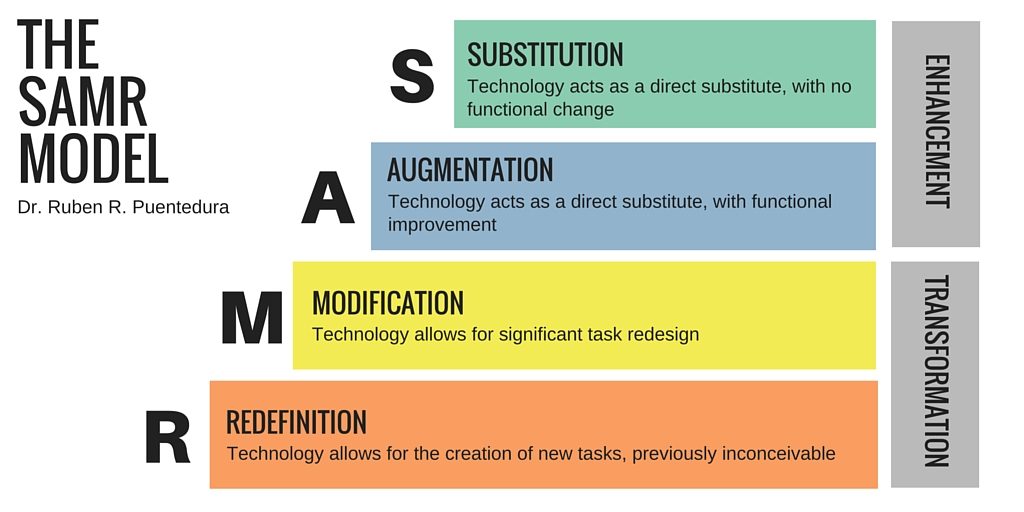
 Technology is a center point to society today and is fundamental to how it functions. With deep-rooted ties to society, it permeates into education. The permeation can prove to be finicky because of improper applications of these external societal resources not fully being useful for students. It is the equivalency of trying to fit a square peg into a round hole. In the article,
Technology is a center point to society today and is fundamental to how it functions. With deep-rooted ties to society, it permeates into education. The permeation can prove to be finicky because of improper applications of these external societal resources not fully being useful for students. It is the equivalency of trying to fit a square peg into a round hole. In the article, 